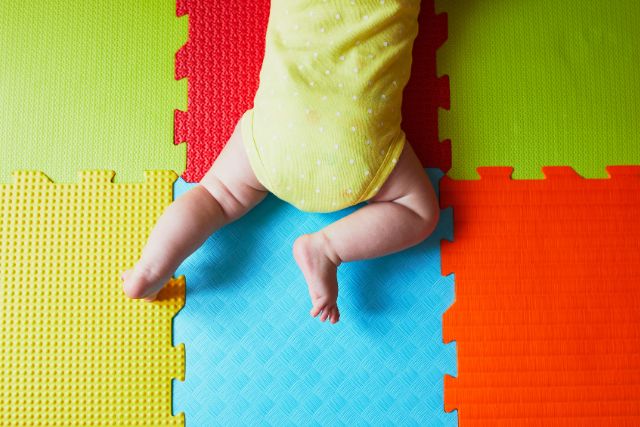Explore tips and insights on New Born Baby Routines That Sustained My Sanity In The First 3 Months After Childbirth. Learn how to navigate the early weeks with confidence and foster a healthy routine that promotes your baby’s well-being and development.
Hey mommy, let me share with you a little bit of my story in 2015. You see, 2015 was the year I gave birth to my first child. Ryan.
I was super worried about my looks, perianal stitches, me and mine. Little did I know that there was more to motherhood than just my looks.
I was lucky to have my mother-in-law by my side from the hospital, but she did not stay for long. Just a week, and she was gone.
That is when the drama began.
My baby would cry, cry and cry. There was nothing like sleeping for three consecutive hours at night or during the day. And breastfeeding was almost throughout.
I hadn’t prepared for this mentally, but at least I was lucky my spouse was very supportive, and he could stay with the baby at night for me to get some rest.
But for how long was he going to do this?
I needed to get a permanent solution, and that is when the search to establish stress-free babysitting techniques began.
Here I’m walking you through the baby routines that worked for me. So take heed.
New Born Baby Routines That Sustained My Sanity In The First 3 Months
1. I Started Learning About My Baby’s Cues
What did I learn About baby cues and body language?
- They are hungry
- They are sleepy
- Tired and just need to relax on a mat
- Wide awake and ready to play
Why it’s important to respond to baby cues?
Recognizing my baby cues
How can I get my newborn to engage?
-
Singing, chatting, or tickling can be great ways to engage and respond to your baby
-
Smiling, rolling your eyes, laughing, or poking out your tongue during bath or tummy time.
-
Give your baby different objects to feel – soft toys, rattles, or cloth books with pages of different textures are fun. Feeling other things helps your baby learn about the sorrounding.
-
Give your baby different things to look at – outside, inside, different people, or different rooms.
-
Talk or make sounds with your baby, and wait for them to respond. You can do this during massages or during breastfeeding
Baby Cues Signs That I Learned From My Baby.
Baby cues that say, ‘I want to play.’
-
eye contact with me
-
smiles and cooing
-
smooth movements of legs
-
hands reaching out to you.
Baby cues that say, ‘I’m tired.’
-
He lost interest in what he was doing
-
Tried to avoid eye contact
-
yawning
-
fussing
-
losing concentration
2. I Started Waking Up Earlier Than My Baby
3. Ensuring That I Had Enough Breast milk Supply Throughout
Your breast milk supply will determine whether your baby will be satisfied and happy or will remain fussy the whole day.
After a long night of breastfeeding, likely, you won’t have enough milk for the day. Likewise, if your baby is sucking after 3- 4 hours, you need to up your game.
This is something I had overlooked in the earlier weeks.
Even though my son was crying for many unknown reasons, I suspected that he wasn’t getting satisfied.
I tried to do the early morning and late evening milk stimulation. I took my dark drinking chocolate tea first thing in the morning and late before bed. Together with other milk-friendly foods, my milk supply increased drastically.
I also started looking for his hunger cues before he loses his temper and it becomes hard to contain him on the breast. These were some of the cues that denoted hunger.
Baby cues that say, ‘I’m hungry.’
- His fists will be all over his mouth.
- He would turn his head towards the breast
- He will smack his lips
- His will have clenched hands.
Whenever I noticed these signs, I put him on the breast for feeding.
What was the result?
My baby will feed for about 20 minutes on one breast and be satisfied. He didn’t have to pull my breast and cry because of the frustration of not getting enough milk.
Similarly, I didn’t have to endure the long hours of breastfeeding and changing positions. Instead, we would have a wonderful eye-to-eye gauze with a bit of cooing that denotes satisfaction.
Afterward, he will also stay long enough before the next breastfeeding session. Staying for a while without breastfeeding gave my body enough time to stimulate and build up my milk supply.
But what lessons did I learn from our breastfeeding sessions?
For you to efficiently cooperate with your newborn, you must understand some factors; for instance;
How do you know when your baby is full?
- Turning away from your breast
- Starting to play, appearing easily distracted or disinterested in feeding
- Relaxing their fingers or hand
- Slowing his sucking
- Starting to fall asleep
- He will close his mouth.
How do I know when my baby has emptied a breast?
How do you know when your baby is not getting enough breastmilk?
-
don’t appear satisfied
-
constantly cry without apparent reason
-
Feels irritable, even after feeding
-
are not wetting diapers
Related: 9 Basic Tips for Increasing Breast milk Supply
4. Warm Bath and Baby Massage for New born Baby Routines
A short Baby massage session
Why should you do a daily Baby massage?
How do you massage a newborn?
- Use soft, gentle strokes to massage the baby’s thighs, legs, and feet.
- Move to the arms, making sure to massage the baby’s hands gently while pulling them outward.
- Massage the stomach clockwise, following the digestive system’s direction.
- Massage the baby’s chest carefully, avoiding the delicate head and neck area.
- Lay the baby on the belly and massage the back with gentle strokes
- The critical factor is to target the right body parts so that you do not injure your newborn.
Do I Need Baby Massage Oil?
5. I Tried Sunbathing in my New born Baby Routines
Why should you sunbathe a newborn?
- Morning sunlight can help Manage jaundice or yellowing of the skin.
- The morning sun also enhances the baby’s energy levels through melatonin synthesis. High melatonin levels in the baby can impact his sleep patterns, which are essential in the newborn’s early years.
- Sunlight can enhance better serotonin levels – Serotonin, a ‘happy hormone,’ is known to enhance happiness and a feeling of security in newborns.
How do you sunbathe a baby?
How many minutes should you expose a baby to sunlight?
Can 2-week-old babies go outside?
What time should I expose my baby to sunlight?
6. I Introduced Tummy Time Into Our Baby Routine
Why is tummy time necessary for a baby?
When should you start tummy time?
When should we stop tummy time?
How long should my baby do tummy time each day?
7. I Did a Little Bit of Swaddling
I noticed that my baby would wake up when I tried putting him to bed. And by the way, it did not matter how tactical I would lay him down. The moment he heard or felt a slight movement, his hands would be all over in the air, which would be the end of the napping session.
Did I tell you how I felt at that moment?
All my 1 to 2-hour efforts of soothing someone to sleep went down the drain in a minute.
So how was I to tackle the startle reflex?
The answer was in baby swaddling. I swaddled my baby to reduce the startle reflex. The startle reflex occurs when the baby is disrupted by movement or noise.
The baby may extend out his arms and legs or cry as he curls his hands and legs in response to the trigger.
Swaddling babies serves to protect them against their natural startle reflex. Baby swaddling can help eliminate anxiety, especially when the baby feels like they are falling off.
It is also a mechanism that imitates a mother’s touch and thus can produce a self-soothing effect.
This means prolonged and better sleep for the baby. If your baby’s startle reflex is keeping them from sleeping properly, try these tips:
-
Hold your baby close to your chest when laying them down to minimize the falling effect. Lean towards the bed and gently put your baby down before releasing him.
-
Swaddle your baby to make them feel safe and secure. Sometimes Swaddling can make your baby feel cozy as though they are in the womb. It usually does help your baby sleep longer.
Takeaway
The first few months after childbirth can be hectic. But, you must find the inner strength and guts to sail through. It took me a few weeks to master the baby routines and tactics that worked best for my baby, but I’m glad I tried out something.
Kindly let me know about your tactics in the comment below. Also do not forget to share this post, who knows, maybe one of these points might give a new-mom some additional sleeping hours ha!
Related: How Best Can You Care For Your Newborn’s Umbilical Stump Cord After Birth?





